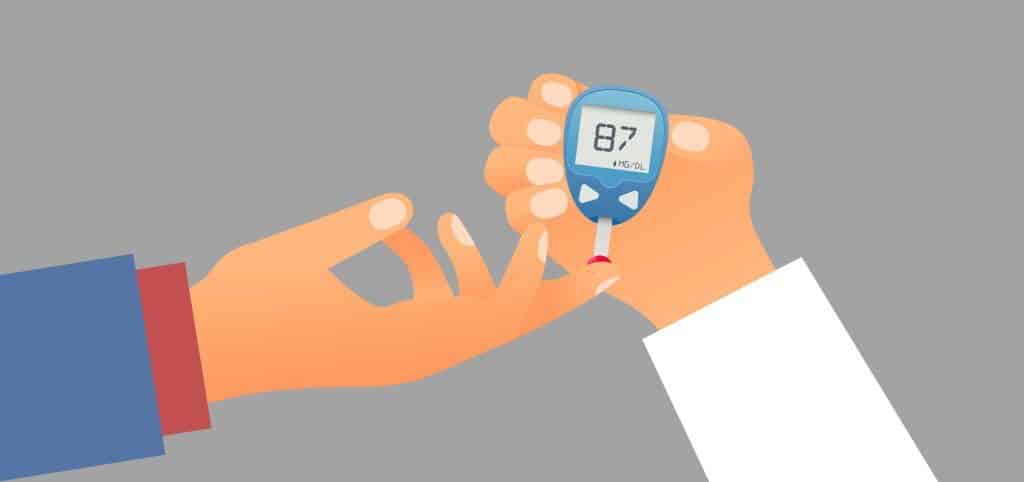When you have diabetes, the importance of regular blood sugar testing cannot be overstated. The ability to monitor your blood sugar levels on a consistent basis is imperative for preventing complications from developing.
Fortunately, there are a number of fast and easy ways to test your blood sugar that don’t require you to prick your finger.
Although prick-and-stick tests continue to be the most common method of assessing blood sugar, there are many other options available that make testing your glucose more convenient and less painful than ever before.
Popular Diabetes Test Methods
Depending on your circumstances and testing needs, one option may stand out as being the best choice for you. Let’s look at some of the most popular types of diabetes testing.
1. Fingerstick Blood Glucose Testing
First and foremost, let’s talk about the standard blood glucose testing method that people have been using for decades.
This method allows you to draw blood from your finger using a blood glucose meter to measure your blood sugar levels.
The upside to this method is that it’s completely non-invasive — you don’t have to insert anything into your body, so there’s no risk of infection.
Blood glucose testing is easy to do, and you can even do it discreetly without anyone else knowing that you’re testing.
The downside is that it’s the least convenient method of testing blood glucose. The blood glucose testing strips that you use typically have to be replaced every single day, and they require you to draw blood from your finger actively.
2. Continuous Glucose Monitoring (CGM)
CGM is a method of glucose monitoring that is becoming increasingly popular among patients. It’s designed to allow you to continuously track your blood glucose levels throughout the day without having to test your blood actively.
CGM is typically a sensor that’s inserted into your skin. The sensor is connected to a transmitter that sends the readings to a monitor or app.
CGM can be applied using various methods, such as a small sensor that’s inserted just below the skin, a sensor attached to the side of your abdomen, or a sensor embedded into a bandage or patch that adheres to your skin.
The main advantage of CGM is that you don’t have to draw blood to test your glucose. This makes it much easier and more convenient to test throughout the day.
CGM can also provide you with long-term glucose data that can help you make adjustments to your diet and lifestyle.
3. Smartwatch-Based Glucose Monitoring
Newer generations of smartwatches are equipped with sensors that allow you to monitor your blood glucose levels.
The technology behind this glucose monitoring method is not yet comparable to the accuracy and functionality of CGM.
However, it is a promising option for tracking blood glucose that is expected to improve significantly in the coming years.
The main benefit of a smartwatch blood glucose monitor is convenience. You don’t have to actively test your blood; you just have to wear the watch and let it do the rest.
Smartwatches typically offer a variety of data tracking and insight tools that can help you to make the most of your glucose monitoring data.
4. Urine-Based Glucose Testing
Urine glucose testing is one of the most common methods of monitoring blood sugar in people who are pregnant.
It’s also sometimes used in people with diabetes who are unable to test blood or are in a situation where they can’t use a blood glucose meter.
This testing method involves collecting a urine sample and testing the concentration of glucose in it. Urine glucose testing is not as accurate as blood glucose testing.
However, it is much less invasive and can be performed on the go, making it ideal for people who are sick or bedridden and can’t test blood.
Urine glucose testing is typically less accurate than blood testing, so it may not be as helpful for people who are trying to make dietary adjustments based on their blood glucose readings.
5. Streathband Testing for Ketones and Acidity
There are a few types of bands that you can wear on the wrist to monitor ketones in the body, as well as the pH level of saliva in the mouth.
Some of these bands are designed for people with diabetes, while others are aimed at people with digestive disorders.
The biggest advantage of these bands is that they allow you to track important health markers without drawing blood.
The main drawback of the bands is that they aren’t very accurate. They are typically consistent with a blood glucose monitor but aren’t very accurate.
If you ever have to go to the hospital, you may be asked to remove the band so the doctors can use a more accurate glucose meter.
6. Electronic Nail-Based Glucose Monitoring
Electronic nail-based glucose monitoring is a fairly new method of tracking blood sugar. It doesn’t involve drawing blood; instead, it uses an electronic sensor embedded into a special nail that adheres to the end of your finger.
It’s similar to the CGM method that has been discussed throughout this article but with a different placement of the sensor.
The advantage of this method is that it’s less invasive and can be used by people who are bedridden or unable to test their blood.
The biggest drawback of nail-based glucose monitoring is that it’s still fairly new, so it’s not as accurate as blood glucose testing.
It’s important to note that some of these methods require a prescription, so you should speak with your doctor if you’re interested in trying them.
Which Diabetes Test Method Is Best for You?
Regular blood glucose testing is one of the best things you can do to stay healthy and prevent the onset of diabetes-related complications.
If you’re currently testing your blood glucose using a fingerstick, incorporating one of the other types of diabetes testing described here could help make your life easier.
Continuous glucose monitoring and smartwatch-based glucose monitoring are really ideal for people who struggle with frequent hypoglycemia and don’t have time to test their blood several times a day.
As technologies evolve, new options will continue to become available for people who want to test their blood sugar in different ways and under different circumstances.
Final Words
Glucose monitoring is a crucial part of managing type 2 diabetes. However, many people struggle to find a monitoring method that fits their lifestyle and needs.
There are a variety of options available as mentioned earlier, so it’s important to choose a monitoring method that works best for you.
If you’re not currently testing your blood sugar, it’s not too late to start.






